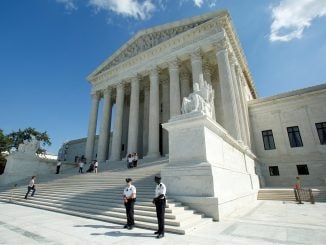A U.S. Border Patrol agent wouldn’t let Jackeline Reyes explain why she and her 15-year-old daughter fled Honduras and needed asylum, pointing to the coronavirus. It was just days after the Trump administration essentially shut down the nation’s asylum system.
“The agent told us about the virus and that we couldn’t go further, but she didn’t let us speak or anything,” said Reyes, 35, who was shuttled on March 24 to Reynosa, Mexico, a violent border city.
President Donald Trump’s administration is relying on a seldom-used public health law to set aside decades-old national and international immigration laws. People seeking refuge in the U.S. are whisked to the nearest border crossing and returned to Mexico without a chance to apply for asylum. It may be the most aggressive clampdown on immigration by a president who’s made reducing asylum claims a top priority.
U.S. Customs and Border Protection said Thursday that nearly 10,000 Mexicans and Central Americans have been sent to Mexico since the rules took effect March 21. Mark Morgan, the agency’s acting commissioner, said the changes were “not about immigration.”
“What’s happening right now is a public health crisis driven by a global pandemic, which has resulted in a national emergency declared by this president to protect the health and safety of every American in this country,” he told reporters.
Mexico is providing critical support, agreeing to take migrants from Guatemala, El Salvador and Honduras, who accounted for well over half of all U.S. border arrests last year.
The Trump administration has offered little detail on the rules, which haven’t been challenged in court. The lack of specifics means the change got little attention when it went public March 20, the same day Trump announced at a news conference that the southern border was closed to nonessential travel.
The administration tapped a law allowing the head of the Centers for Disease Control and Prevention to ban foreigners if their entry would create “a serious danger” to the spread of communicable disease. The U.S. has the most confirmed cases in the world. CDC director Dr. Robert Redfield issued a 30-day order and said he may extend it.
“The administration is able to do what they always wanted to do,” said Aaron Reichlin-Melnick, policy counsel for the American Immigration Council, which has criticized the administration. “I don’t see this slowing down.”
Mexico said it won’t take unaccompanied children and other “vulnerable people.” Carlos Gonzalez Gutierrez, Mexico’s consul general in San Diego, said that includes people who are over 65, pregnant or sick.
The U.S. also is returning Central American children who travel with grandparents, siblings and other relatives, said a congressional aide who was briefed by Customs and Border Protection officials and spoke on the condition of anonymity because the information was not intended for public release. Previously, children who weren’t with parents or guardians were considered unaccompanied and automatically put into the asylum pipeline.
The health risks of holding migrants in crowded spaces like Border Patrol stations is “the touchstone of this order,” Redfield wrote. He said exceptions to immediately expelling someone can be considered but didn’t elaborate.
“If someone is deemed to have the appropriate level of fear, those will be processed on a case-by-case basis,” Morgan, the CBP acting chief, said Thursday.
An internal Border Patrol offers some detail on exemptions: An agent who determines that a migrant claims a “reasonably believable” fear of being tortured can be referred for additional screening under the U.N. Convention Against Torture, a lesser form of asylum that’s harder to qualify for.
Matthew Dyman, a CBP spokesman, declined to comment on the memo this week.
“Obtaining and posting leaked information is a great way to degrade trust and communication between CBP and the media,” he said.
Under the rules, agents take migrants to the nearest border crossing in specially designated vehicles and avoid stations, minimizing the risk of exposure to the virus. Those not sent to Mexico are flown to their home countries.
CBP said it has less than 100 people in custody, down from a peak of more than 19,000 during last year’s surge of border crossers. During the first 11 days of the new rules, 6,375 people were expelled on the Mexican border and 20 on the Canadian border.
Ten Senate Democrats sent a letter to acting Homeland Security Secretary Chad Wolf, who oversees border agencies, saying the Trump administration appeared to have “granted itself sweeping powers to summarily expel large, unknown numbers of individuals arriving at our border.”
For Reyes and others sent to Mexico, they don’t know what’s next. She tried getting home to Honduras despite learning her brother had been killed there and her mother and 7-year-old daughter had fled to the Nicaraguan border, but she’s stuck in Mexico as the virus closed borders in Central America.
Reyes said she joined dozens who entered the Guatemalan mountains illegally in a bid to reach Honduras but was stopped by soldiers and returned to Mexico, where she was quarantined in a migrant shelter.



